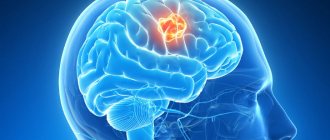Flight specifics
When a person has suffered a stroke, his motor activity rapidly decreases, since the activity of the subcortical centers, which are mainly responsible for coordination, is affected. In this regard, there are certain restrictions for such people, in particular, it is prohibited to fly on an airplane, since this air transport can have a rather ambiguous effect on the human body.
Reference! Flying is prohibited for those who have recently suffered a brain stroke and suffered severe consequences afterwards.
It is important to understand that the decision to allow or prohibit flights should be made only by a doctor who is well acquainted with the characteristics of the patient’s illness.
As for the plane itself, the pressure there always fluctuates. It depends on the amplitude of the aircraft, which is moving at a particular altitude. This factor often leads to a new attack, since the human body has not yet fully recovered from the previous incident.
Stroke: main causes
Is it possible to fly on an airplane after a stroke? We’ll figure it out below. In the meantime, let’s find out what causes the disease.
The main reason for this dangerous pathology is that one of the brain vessels is blocked by blood clots or foreign objects. Blood cannot get through this barrier; as a result, acute oxygen starvation occurs, and some of the cells die. This phenomenon is called “ischemic stroke”. It is better to find out in advance whether it is possible to fly after such a pathology.
A hemorrhagic stroke is when an artery ruptures and blood spills into the outer tissue of the brain, causing swelling that causes the death of cells and nerve fibers.
Preparing and facilitating the flight
It is advisable for the patient to prepare himself for the future flight. To do this, the following activities are carried out:
- The blood vessels of the brain are strengthened, medications prescribed by doctors are taken;
- Diagnostic screening is done to identify a possible aneurysm;
- It is imperative to take the prescribed medications; you will definitely need medications against blood pressure and motion sickness;
- A pillow is taken on board to ensure that the passenger is comfortable in the seat. As a result, the load on the cervical spine is reduced.
Air carrier employees must provide official permission to provide an oxygen bag. You can also take antidepressants if your doctor approves.
Often people who have suffered from an illness need blood thinning. For this purpose, special medications are taken.
Attention! It is necessary to avoid drinking drinks with a high content of caffeine and alcohol; it is better to give preference to plain still water; it is recommended to drink a lot of it.
Before the flight, experts advise first putting on compression garments for the comfort of the body. Sometimes the passenger must walk between the rows.
The patient must try to treat his own health with great care and take care of it. When a person feels normal, the doctor cannot prohibit flights. It is important to remember that if you managed to fully recover once, it is unlikely that this will happen again a second time.
The main thing is timely help
This disease is very dangerous for human health; half of the cases are fatal. But if you provide the patient with medical care in time, his life can be saved. After a stroke has occurred, the patient must be placed in the intensive care unit within 3-4 hours, in some cases an operation by a neurosurgeon will be required. The less time it takes to get to the hospital, the higher the chances that the person will remain alive and will not become disabled. However, the area of the affected area of the brain is important: serious complications cannot be avoided if it is large.
Possible threats
During the flight, people may encounter some difficulties:
- First of all, the position in which the passenger remains for several hours is not entirely comfortable. Since a person is deprived of the ability to move freely, physical inactivity may develop , and this is fraught with the occurrence of blood clots. If the flight takes more than five hours, the passenger's feet become very numb.
- Due to the powerful air conditioning system, there is dry air on board. As a result, the body loses moisture and blood thickening occurs due to dehydration. Doctors recommend replenishing missing moisture reserves exclusively with clean water.
- The distance between the seats on board is quite small . For convenience, it is recommended to bring loose slippers or comfortable shoes to improve blood circulation in the feet.
Possible threats include the following:
- lack of oxygen: when a person has suffered a stroke, all neurons die in the affected area. The cells themselves are susceptible to necrobiosis. If a passenger requires additional oxygen during the flight, they will die;
- Reduced blood pressure: a long flight is stress for blood vessels and the nervous system. In particular, the pressure load increases. The body continually tries to get used to less oxygen. As a result, the heart rate increases noticeably;
- physical inactivity: An immovable position threatens physical inactivity, which results in the formation of blood clots. Even one blood clot in the lower extremities is enough for a relapse to occur;
- fear: fear, or aerophobia as it is also called, is especially dangerous for a patient who suffered a stroke some time ago. The very fact of a long flight frightens a person; this can cause a recurrence of the disease;
- maneuvers and vibration: this leads to heart rhythm disturbances. In addition, if the plane finds itself in a zone of turbulence, the pain in the head intensifies.
Reference! At high altitudes, the air tends to become thinner. This often becomes the main cause of hypoxia.
A stroke survivor may have increased intracranial pressure. The appearance of edema in the brain cannot be ruled out. The corresponding factors are provocateurs of nausea and vomiting.
When stress hormones become active, blood vessels constrict. If their walls are affected by cholesterol plaques, then there is a threat to health. Thick blood leads to clotting, which increases the risk of ischemic stroke.
Against the background of negative emotions, the hormone adrenaline also increases. It causes blood vessels to constrict and pressure to rise. When blood pressure is high, hemorrhagic stroke can occur.
We invite you to watch an interesting video on the topic:
Let's find out whether it is possible to fly on an airplane after a stroke: doctors' opinions, all the pros and cons
In this article we will try to figure out whether it is possible to fly on an airplane after a stroke and what the consequences are.
No one is immune from diseases in this world; some of them can seriously threaten human life. For example, stroke has the second position on the list of deadly diseases. What kind of pathology is this and how is it dangerous for the patient?
A stroke is a circulatory disorder that causes cells in the brain to die, resulting in either death or varying degrees of disability.
Stroke: main causes
Is it possible to fly on an airplane after a stroke? We’ll figure it out below. In the meantime, let’s find out what causes the disease.
The reason for this dangerous pathology is that one of the brain vessels is blocked by blood clots or foreign objects. Blood cannot get through this barrier; as a result, acute oxygen starvation occurs, and some of the cells die. This phenomenon is called “ischemic stroke”. It is better to find out in advance whether it is possible to fly after such a pathology.
A hemorrhagic stroke is when an artery ruptures and blood spills into the outer tissue of the brain, causing swelling that causes the death of cells and nerve fibers.
The main thing is timely help
This disease is very dangerous for human health; half of the cases are fatal. But if you provide the patient with medical care in time, his life can be saved.
After a stroke has occurred, the patient must be placed in the intensive care unit within 3-4 hours, in some cases an operation by a neurosurgeon will be required. The less time it takes to get to the hospital, the higher the chances that the person will remain alive and will not become disabled.
However, the area of the affected area of the brain is important: serious complications cannot be avoided if it is large.
Long rehabilitation
Even with a successful operation, the patient will undergo rehabilitation for a long time. Most people after a stroke learn to live again and deal with the negative consequences of the disease.
On average, a patient’s normal life can begin only after 2 months.
It takes much longer to return to work; Driving a car or business trips to other cities and countries are unavailable to many for a very long time.
Patients who have suffered a stroke in the recent past, whose life was completely or partially associated with travel, ask doctors the question: “Is it possible to fly on an airplane after a stroke?”
Will flights be allowed?
As a rule, the doctor's answer will be positive. You can use air transport, but there are certain conditions and restrictions. This is important to remember. The problem is that, in fact, flying is a tiring and difficult process even for a healthy person.
Due to severe changes in pressure, stress and panic, and an unfavorable atmosphere in the aircraft cabin, repeated cerebral hemorrhage may occur, which will be fatal for most patients. What is especially scary is that qualified assistance will not be provided, because it is impossible to do this at altitude.
What points should be taken into account?
So, what is the opinion of doctors about whether it is possible to fly after a stroke? Typically, attending physicians allow such travel if the following points are taken into account:
- How much time has passed. If more than six months have passed since the operation, but not less than 2 months. It is a big plus if no health-threatening complications arise during this period. That is, after complete recovery from a stroke, you can fly.
- Quality of rehabilitation. The recovery period for the patient was completed successfully, massage and physical exercises were used.
- At what level is your blood pressure? It should be normal, without a sharp rise and fall, the threshold of 140/90 should not be exceeded. Regular intake of prescribed medications is important.
- Is the patient susceptible to aerophobia? Is it possible to fly after a brain stroke if you have a fear of flying? It is extremely important that a person does not suffer from aerophobia, as it provokes severe anxiety and stress.
If all conditions are met and the patient has confidence in his abilities, then he is allowed to fly and is prescribed certain recommendations.
The preparation must be correct
We continue to figure out whether it is possible to fly after a stroke. In advance, the patient must prepare himself and his blood vessels for high load.
The preparation process includes:
- Taking certain medications. Most often, doctors prescribe special blood-thinning medications (aspirin is considered the most popular) that prevent blood clots in blood vessels and relapse of the pathology.
- Passing examinations. Before the flight, an electrocardiogram and ultrasound examination of the vessels of the head are required. This is required to eliminate the possibility of aneurysm formation. During the flight, pressure changes are possible, and an aneurysm may rupture, leading to a fatal brain hemorrhage on an airplane after a stroke.
- Own first aid kit. The patient must plan in advance what medications he will take with him on the plane. The first aid kit should consist of medications that stabilize blood pressure and sedatives; medications against motion sickness are also useful.
If the preparation is carried out correctly by the patient, then it is possible to fly after a stroke.
Also, the trip will be comfortable if you purchase special pillows for the head, in this way the unnecessary load on the cervical spine and blood vessels will be reduced. Excessively fatty foods are contraindicated before a flight; it is better to prefer light foods.
Symptoms worsen at altitude
At altitude, the typical symptoms of hypertension worsen:
- The occurrence of migraine is a cerebrovascular disease due to prolonged spasm of blood vessels in the head. A dangerous complication is the cerebral form of hypertension (stroke). To prevent arterial hypertension from developing into a malignant form, it is worth defeating migraine at the initial stage.
- The appearance of pressing chest pain. The heart works overtime, so discomfort in the chest may turn out to be angina. If there is a history of myocardial ischemia in hypertensive patients, they should fly with great caution.
- Having severe shortness of breath. Limited space and elevation lead to a feeling of lack of oxygen; reflex shortness of breath may occur in response to stress. To avoid real suffocation, the patient’s breathing must be deep and even; oxygen cocktails can come to the rescue.
- Development of tachycardia. The intense work of blood vessels leads to a rapid heartbeat, because they quickly pump large amounts of blood. This leads to spasm of blood vessels and tension in their walls.
Maybe you should choose another transport?
A person must take responsibility for his own condition while traveling. After a mini-stroke, you can fly on an airplane. However, if you have a choice of mode of transport, it is better to choose a bus or train. It may take longer to get there, but many unpleasant health issues will be avoided.
What are the dangers of flying after a stroke?
However, during the flight, the patient may in any case encounter various kinds of problems that cannot be foreseen in advance.
So, the problems could be the following:
- Dry air. The skin dries quickly due to air conditioning on airplanes, and the unpleasant thing is that the body quickly becomes dehydrated. But this provokes thickening of blood in the vessels, which can turn into a mortal danger for a person after a stroke.
Therefore, you need to drink more fluids, but not tea and coffee, but pure water, and still. Alcoholic drinks are strictly prohibited; their influence is detrimental to the cardiovascular system, and as a result, a heart attack can occur.
Long sitting position
Passengers on the plane remain motionless for a long time. Physical inactivity can cause blood clots, resulting in a recurrent stroke. This possibility will be higher the longer the flight lasts. Flights typically last more than five hours, so passengers often experience swollen feet.
Wearing compression garments under regular clothing will help prevent this. Women can buy special compression tights. They will disperse the blood where it stagnates.
Sometimes it is acceptable to get up from your seat at least once and walk around the salon, of course, when this is not prohibited. To disperse blood throughout the body, it is good to rotate your hands, feet and neck.
In general, simple health-improving exercises will help.
Discomfort
Sitting for a long time is uncomfortable due to the small distance between the chairs. To improve your position, you can take off your shoes and put on slippers, thereby allowing blood to flow better to your feet. It would be a good idea to use a special pillow under your neck; its benefits have already been discussed above.
Stress, anxiety, fear
It is better to try to avoid this. It's normal to feel anxious during a flight. Both women and men suffer from this equally. To reduce stress levels, drink a sedative: the drug Novo-Passit or valerian tincture is safe.
The most dangerous moments of a flight for a patient will be takeoff and landing, as well as turbulence.
Landing and takeoff
Their main danger is that at this time the atmospheric pressure changes. This negatively affects the functioning of the cardiovascular system.
There is less oxygen in the cabin, which leads to dizziness, shortness of breath and problems with the heart. This all has an adverse effect on the patient after a stroke and can cause re-hemorrhage.
What else is dangerous about flying on an airplane after a stroke?
Turbulence
An unpleasant vibration appears when the plane hits air pockets. Under its influence, the heart rhythm may be disrupted, as well as blood circulation and blood supply to the brain. A new blood clot forms, and subsequently another stroke.
The only advice in this case would be the following. You need to calm down and try to sleep.
If you follow all the doctors’ recommendations, nothing bad should happen, especially if throughout the flight the patient kept his blood pressure under control, consumed enough fluids and stretched his legs. The trip will be comfortable and without serious consequences. How to fly by plane after a stroke?
How to transport a sick person by plane?
Many problems during a flight can be avoided if the special state of the body is discussed in advance with the air carrier at the stage of booking a ticket.
It is important to understand that if transportation involves a transfer, then the conditions must be agreed upon along the entire route.
Are there any age restrictions for old people? If an elderly person does not have any special health problems, then a medical certificate and support will not be required. A person needs help only when getting on and off.
At the stage of booking a ticket, you should notify about limited mobility and possible additional assistance (about a special diet, special services - for example, receiving a stroller or gurney at the airport), etc.
Passengers requiring special assistance in the aircraft cabin must be issued a medical certificate by a doctor.
If it is necessary to have an accompanying person, a second seat in the cabin is provided next to the stretcher.
Patients are boarded before the rest of the passengers board, and disembarked after everyone else.
Disabled persons must travel with accompanying persons. If transportation is carried out under the supervision of the carrier, then consent must be obtained in advance from the company itself, and it must be in writing.
People who are blind or hearing impaired must also be accompanied. If this is not possible, a guide dog may be present on board. Typically, such a dog can be kept in a cabin without a crate if:
- man depends on the animal;
- there is a certificate of training for such needs;
- it has a muzzle, the animal is located at the human’s feet.
Before any flight, persons with special medical conditions should consult their attending physician.
In order for a sick, disabled or elderly person to fly on a regular aircraft, and these categories of citizens need care, a certain number of seats are purchased for accompanying persons - medical staff, loved ones.
We looked at the question of whether it is possible to fly on an airplane after a stroke.
Source: https://autogear.ru/article/470/135/mojno-li-letat-na-samolete-posle-insulta-mneniya-vrachey-vse-za-i-protiv/
Long rehabilitation
Even with a successful operation, the patient will undergo rehabilitation for a long time. Most people after a stroke learn to live again and deal with the negative consequences of the disease. On average, a patient’s normal life can begin only after 2 months. It takes much longer to return to work; Driving a car or business trips to other cities and countries are unavailable to many for a very long time.
Patients who have suffered a stroke in the recent past, whose life was completely or partially associated with travel, ask doctors the question: “Is it possible to fly on an airplane after a stroke?”









